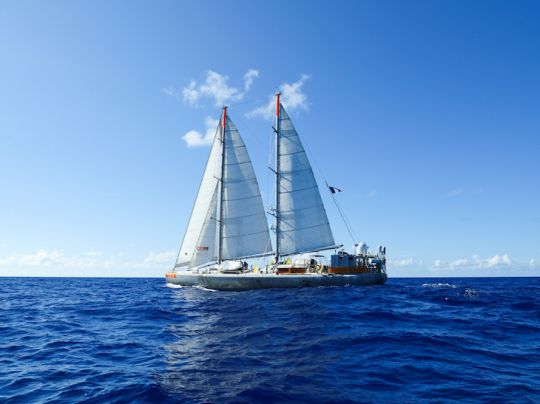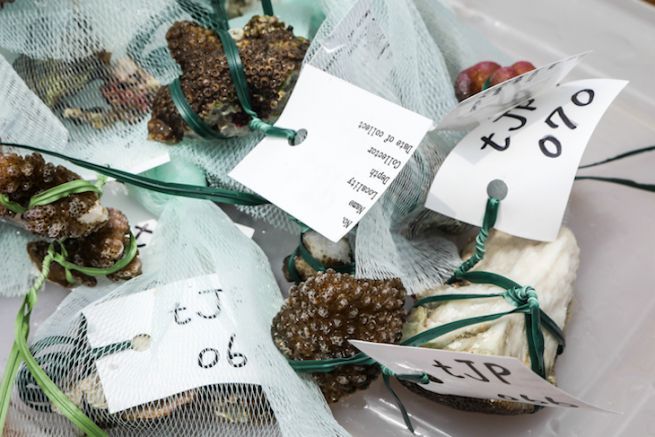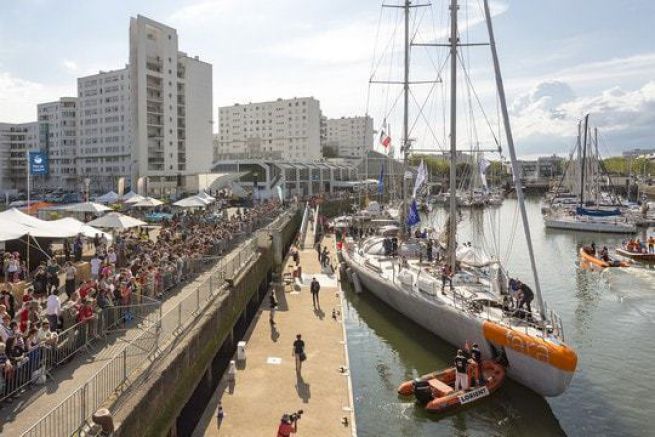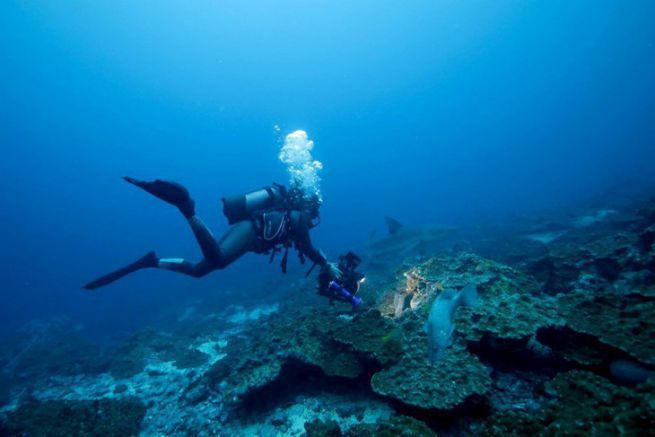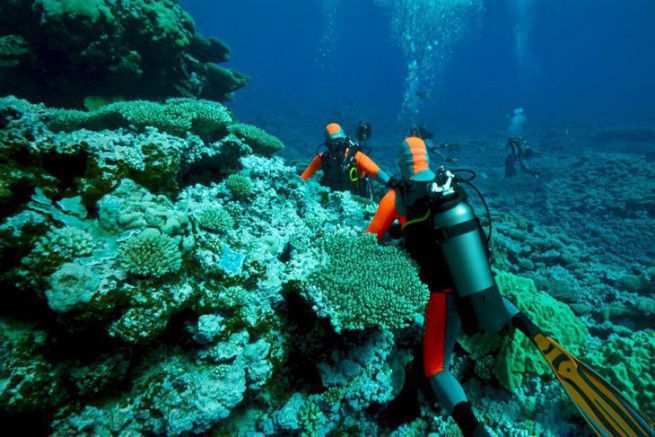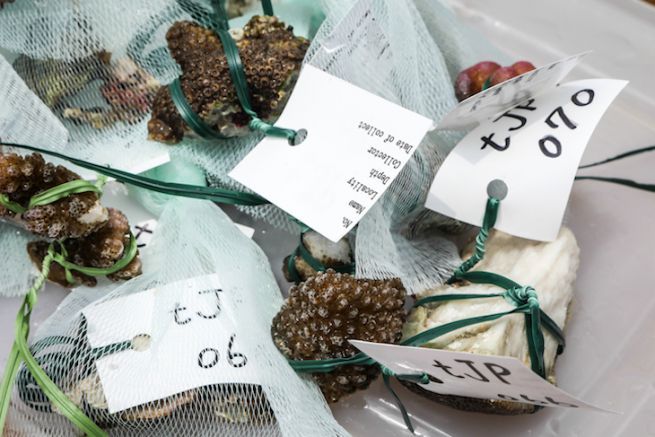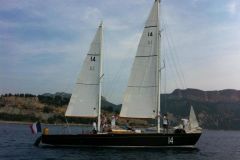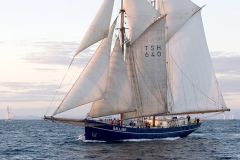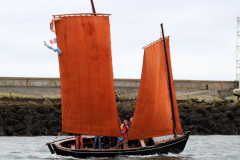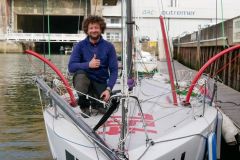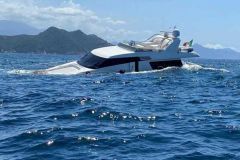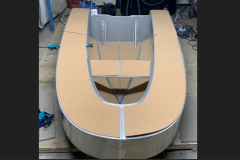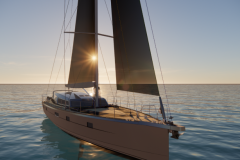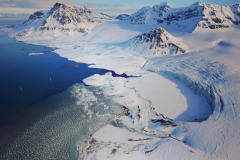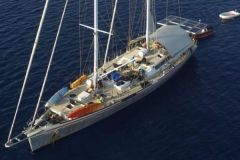Half of the route completed and already 15,000 samples recovered
The schooner Tara left Lorient on May 28, 2016 for a two-year expedition on coral reef health in the Pacific. The aluminium sailboat has now covered 50,000 km from east to west, half of its course, and visited 15 countries. This Tara Pacific 2016-2018 expedition enabled it to travel the Pacific Ocean to reach the most isolated coral reefs in the South Pacific. The scientific team has already been able to collect nearly 15,000 samples out of the 35,000 intended to better understand coral biodiversity in the face of environmental changes.

The 15,000 samples taken from 17 sites should make it possible to define the microbial diversity associated with the coral. The scientific team was also able to test a brand new sequencing technique in situ dNA to allow molecular identification of species immediately at the sampling sites. " Thanks to the "MinIon", a sequencer the size of a large USB key, high-speed DNA sequencing is carried out on board, which is very useful for identifying species almost instantaneously in case of doubt. The analysis of the data allows a classification of the collected species by comparison with those already known" explains Quentin Carradec from Genoscope (CEA).
Shore-based teams have begun sequencing genomes to characterize the diversity of the microbiome, that is, the set of microorganisms associated with the coral, reef fish or surrounding water.
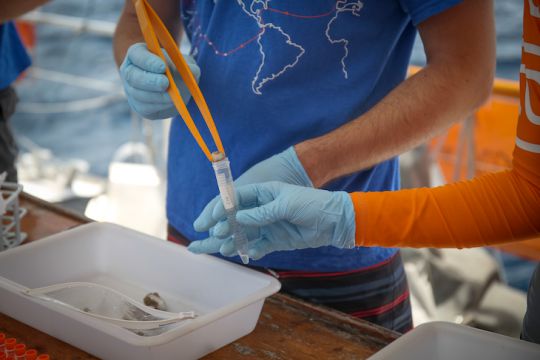
Establish a sample library
This library of samples will allow the establishment of an unpublished database for international laboratories gathered by the Tara Expedition Foundation. The latter will thus be able to compare reefs and understand why certain sounds are more resistant than others (rich coral ecosystem? high biodiversity?).
Furthermore, a possible correlation could be established between the microbial diversity associated with corals and the diversity of coral species themselves. The genetic diversity studied should make it possible to discover the genomes of a whole range of organisms living with and around coral, as well as their responses to stresses linked in particular to global warming.
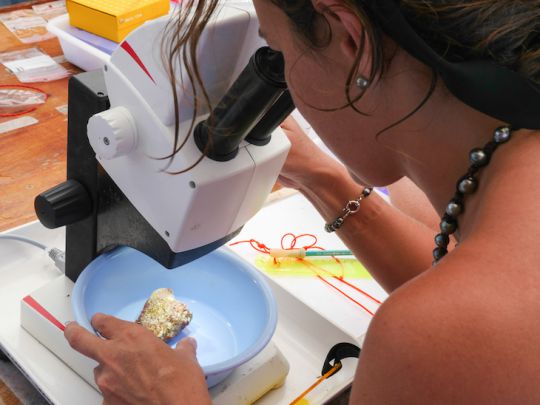
The main observations
This first part of the voyage gave the crew of Tara the opportunity to become aware of the massive coral bleaching at Ducie Island - west of Easter Island - in November 2016 and then in Moorea - French Polynesia - the following month. Tara's mission focuses primarily on the biological responses of coral to environmental upheavals. Here are the observations she has been able to draw from it:
- In Polynesia, bleaching has reached 30-50% in some Tuamotu islands,
- At some sites, up to 70 per cent of the coral cover was affected by bleaching, as in the Pitcairn Islands,
- In the Samoan Islands bleaching had reached 90% and resulted in the death of coral colonies,
- In Micronesia, Tuvalu and Kiribati, some of the reefs were already dead before Tara's arrival
- The reefs of Wallis and Futuna have been relatively well preserved,
- In the northern Pacific, in more temperate waters, reefs have not escaped bleaching either: it reaches 70% in Okinawa, Japan.
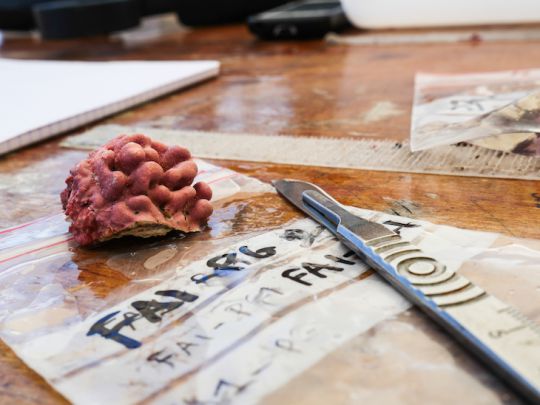
The increase in water temperature responsible for bleaching
In some sparsely populated and polluted areas, such as Polynesia, only the rise in temperature could induce such degradation of corals. " The more the temperature rise exceeds expected normal, the longer the exposure times to these high water temperatures and the stronger the bleaching" says Serge Planes, a CNRS researcher and scientific director of the mission.
In this case, the symbiosis between the algae and the animal is broken and the polyp dies if the warming continues for more than three weeks.
"Today we can no longer talk about one-off or cyclical episodes of rising temperatures, such as the El Niño climate phenomenon. Today, we are in the presence of global warming of the ocean, plus very hot summer periods, less and less spaced from year to year." continues Serge Planes . For Romain Troublé, Executive Director of the Tara Expeditions Foundation, this is proof that "...the Tara Expeditions Foundation is the best way to make a difference limiting warming to two degrees as agreed in the Paris Accord is far from sufficient for marine ecosystems."

Coral reefs forced to adapt
"What we'll be able to tell with the original Tara Pacific data is what factors are promoting or not promoting the resistance of coral species", explains Denis Allemand, director of the Scientific Centre of Monaco and scientific co-director of the expedition.
Today, some species continue to abound and therefore find ideal conditions to develop. While other species are unable to adapt. In the years to come, coral reefs are therefore likely to change profoundly.
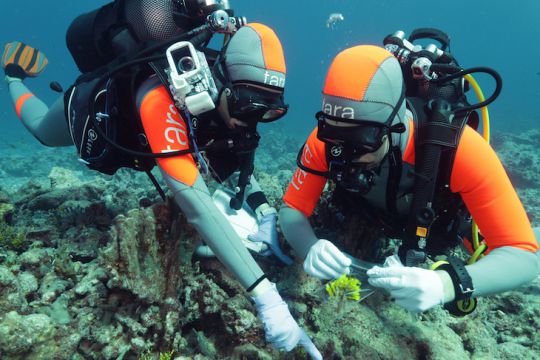
The Coral Triangle for the 2nd part of the expedition
The schooner Tara is now at the heart of the Great Barrier Reef and will continue its expedition in New Caledonia, the Solomon Islands, Papua New Guinea, Indonesia, the Philippines, Palau, China, Japan and Hawaii. Tara Pacific will then end with the return of the boat in October 2018 in Lorient.
